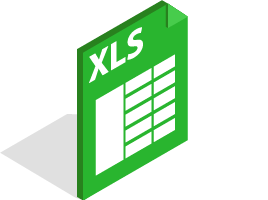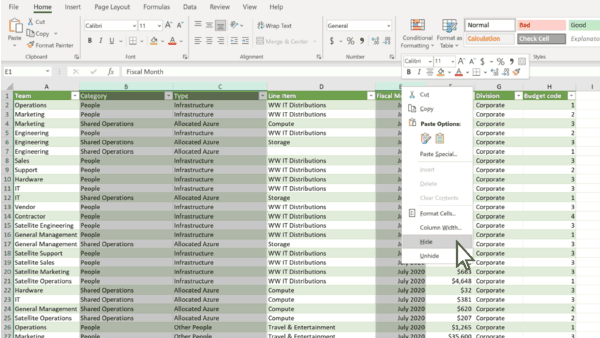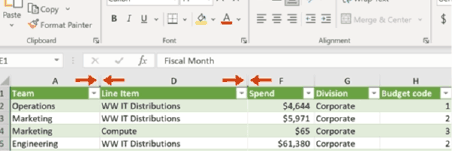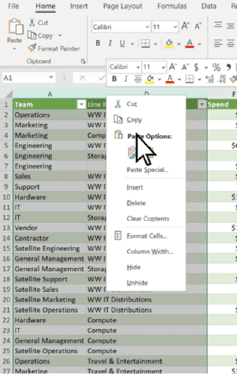Hide Rows and Columns
When using Excel and going through your data, sometimes you’ll find that there are certain rows and columns that are just getting in the way.
Or even sometimes, there will be data that’s irrelevant currently that you want to hide for just the time being.
In any case, Microsoft Excel allows you to easily hide rows and columns with a few clicks.
The selected rows or columns will now be hidden, and won’t show up when you’re using the spreadsheet.
You can see which parts of your spreadsheet have hidden rows or columns easily too, as there will be two lines in the row or column bar to show hidden cells.
To easily unhide rows or columns, you can double-click the two aforementioned lines. Or, you can select the two adjacent rows or columns and right-click, and select ‘Unhide’.
Hiding rows and columns is particularly useful for long spreadsheets such as day sheets or call logs – as you avoid having to scroll down to the end of the sheet.
Select Using Ctrl + Shift
Excel has many elegant tools you can use to make tasks quick and easy, and selecting cells is no different. Microsoft allows you to quickly select multiple cells using both Shift and Ctrl, which can easily speed up your workflow when working in the program.
Clicking on two cells while pressing Ctrl will select those cells simultaneously, as will any other cell you click while pressing Ctrl.
Shift, on the other hand, allows you to create a box selection of cells. Simply click whatever cell you want to be on the top left corner, and then Shift-click whichever cell is desired for the bottom right corner. Excel will automatically select a rectangular box based on the selected cells.
However, you can use both Ctrl + Shift to select whole rows and columns. By selecting a cell and holding down Ctrl + Shift, you can use your arrow keys to select all the data above (by pressing Up), below (by pressing Down) or left and right (with the respective arrow keys).
Use Quick Analysis
Quick Analysis is another tool you can use to save time and quickly do what would usually be a time-consuming task. This tool lets you easily format your data, or even make a chart out of a set of data, with just a few button clicks.
This tool saves a lot of time and has many functions that can generally improve your Excel experience and workflow.
Automate with IF Functions
Using IF functions to easily automate your spreadsheet is one of the most useful tools in Microsoft Excel.
In any cell, firstly type ‘=IF’. The = symbol indicates to Excel that you’re entering a function, of which there are many you can learn and use. Then, you want to create your new function.
For example, this function is looking to see if C2 is Greater than B2, and will display ‘Over Budget’ if it is. Otherwise, it will display ‘Within Budget’. IF functions work with the templating =IF(Condition, Is, Otherwise), with Is and Otherwise being your two outcomes. You can use this template to simply make your own simple IF functions with ease.
Tag Colleagues in Comments
Collaboration is key to any modern workplace, and Microsoft knows this. This is why Excel — and the other Microsoft 365 programs — have great collaboration features.
One simple feature you should be utilising in collaboration is being able to tag colleagues in comments. This can be super useful and helps improve communication.
To do so, simply right-click wherever you want to comment and select ‘New Comment’. Then, @Mention whoever you want to tag in the comment. This will automatically send them an email notifying them that you’ve tagged them.
Add More Than One Column
Creating multiple columns in Excel is simple, and a great way to add more columns to a finished table or easily expand your spreadsheet.
Make Use of Data Validation
Data validation restricts user entry, ensuring that only correct data is being entered into the spreadsheet. For example, you can restrict entry on certain cells to only allow numerical values between 50 and 100. Or, you can only allow text that contains a certain word.
To do so, select the cells you want to validate, then head over to the ‘Data’ Tab. Then, click ‘Data Validation’. This will bring up a data validation menu which you can use to create new rules for those specific cells.

















